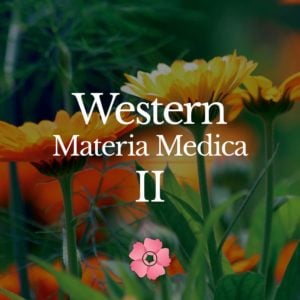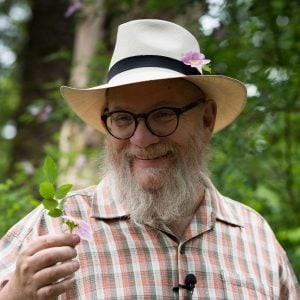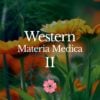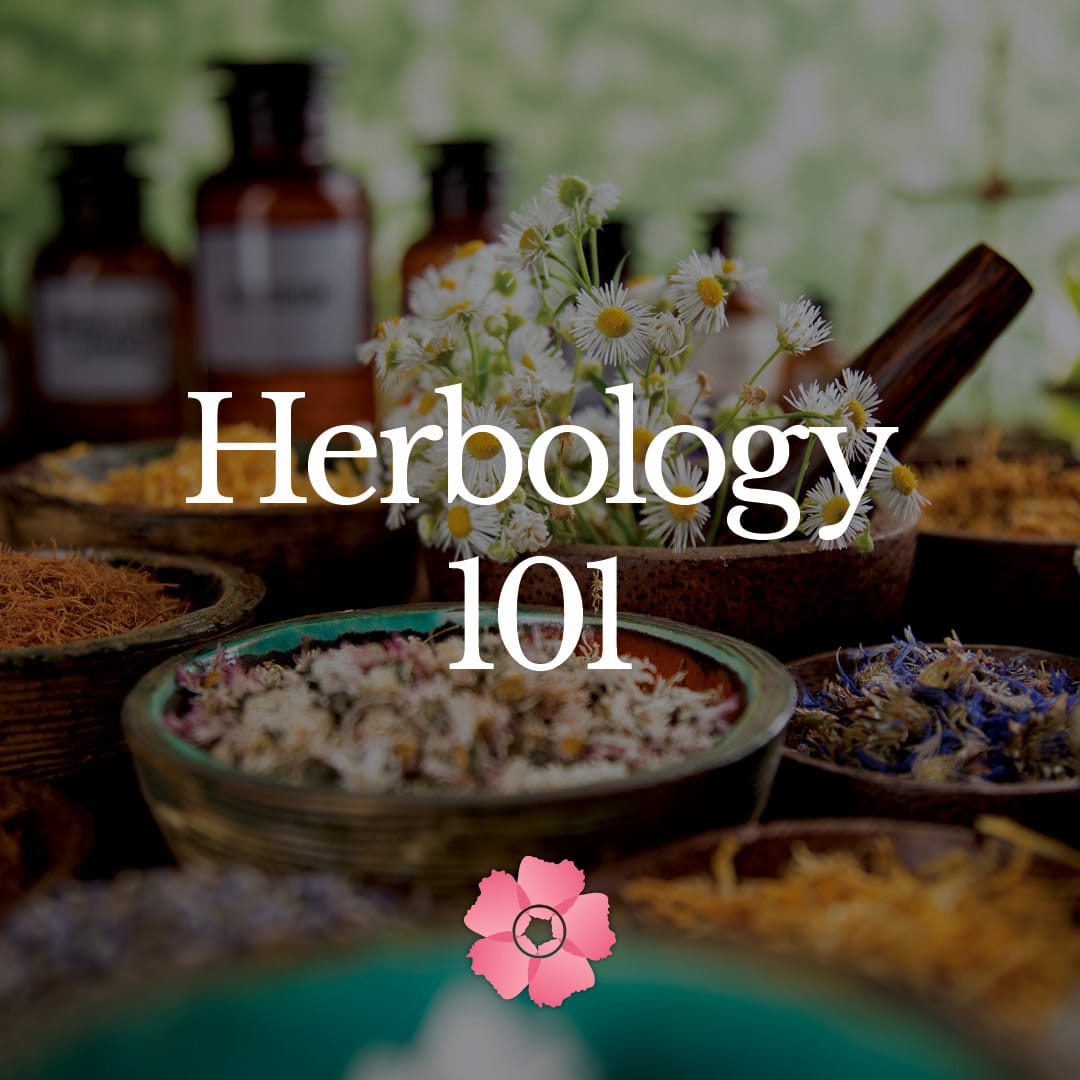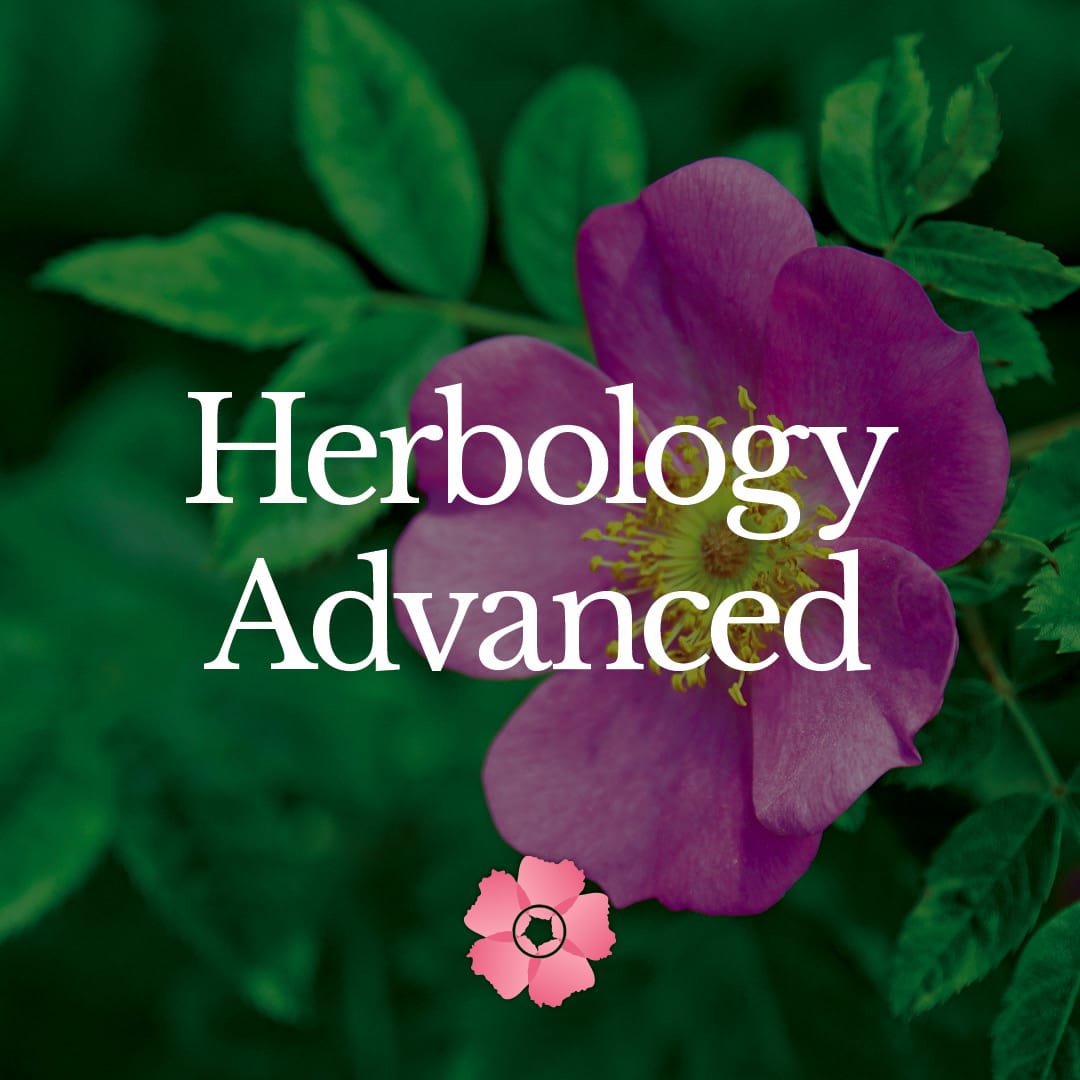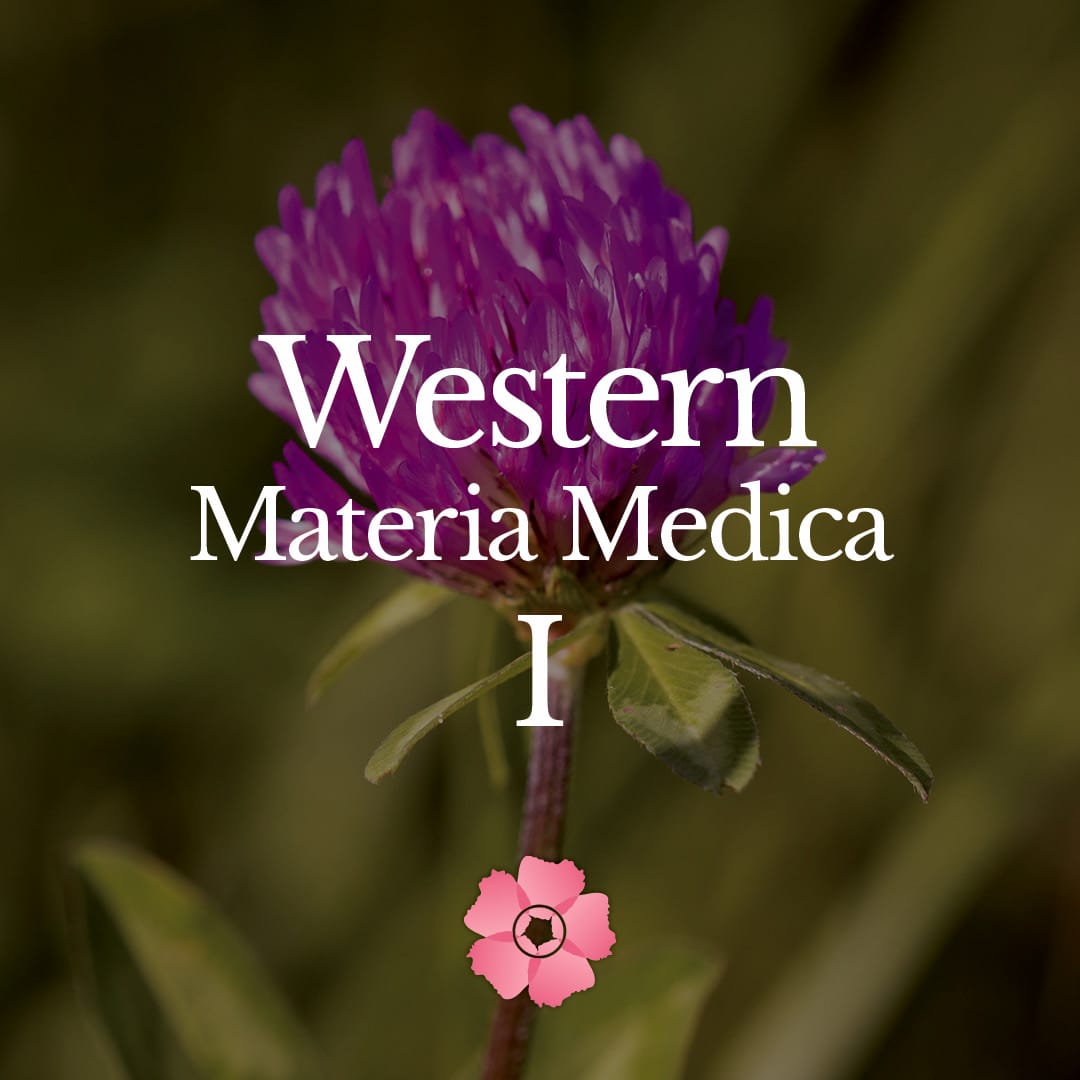Lesson One – Metabolic Botanicals II 22 Videos
1.1 Thermogenesis
1.2 Overactive Thyroid (Hyperthyroidism)
1.3 Thyroid Stress: Depressive
1.4 Fucus vesiculosus (Bladderwrack)
1.5 Lycopus virginicus (Bugleweed)
1.6 Garcinia cambogia (Gamboge)
1.7 Oplopanax horridum (Devil’s Club)
1.8 Eleutherococcus senticosus (Eleuthro)
1.9 Panax ginseng (Ginseng)
1.10 Panax quinquefolium (American Ginseng)
Lesson Two – The Immune System II 19 Videos
2.1 Immune Deficiency
2.2 Immune Excess
2.3 Immune Trophorestorative
2.4 Baptisia tinctoria (Wild Indigo)
2.5 Ceanothus americanus (Red Root)
2.6 Echinacea angustifolia (Echinacea)
2.7 Lomatium dissectum (Lomatium)
2.8 Thymus vulgaris (Thyme)
Lesson Three – Botanicals for Obstetric & Pediatric Disorders II 19 Videos
3.1 Emmenagogues as Abortifacients
3.2 Difficulty with Conception
- Excessive bleeding even at non-menstrual times
- Defective luteal function
- Cervical mucus
- Immunological rejection of sperm
- Pelvic Inflammatory Disease (PID)
- Emotional Issues
3.2 Therapy during Pregnancy
- Morning sickness
- Threatened miscarriage
3.3 Preparing for Childbirth
3.4 Breastfeeding
3.5 Postnatal Depression
3.6 Pediatrics
3.7 Cnicus benedictus (Blessed Thistle)
3.8 Caulophyllum thalictroides (Blue Cohosh)
3.9 Nepeta cataria (Catnip)
3.10 Matricaria chamomilla (German Chamomile)
3.11 Petroselinum sativum (Parsley)
Lesson Four – Botanicals for Geriatrics II 16 Videos
4.1 Ginkgo biloba (Ginkgo)
4.2 Pilocarpus jaborandi (Indian Hemp)
4.3 Rosmarinus officinalis (Rosemary)
4.4 Vaccinium myrtillus (Bilberry)
4.5 Viscum album (Mistletoe)
Lesson Five – Parasites & Ecological Balance II 17 Videos
5.1 Ecological Balance
5.2 Parasites
- Recommended action
- Single herbs
- Suggested program
5.3 Candida albicans
- Recommended action
- Single herbs
5.4 Candida Diet
- Food and Drinks to be avoided
- Good Foods
- Supplements
- Candida long questionnaire
5.5 Juglans nigra (Black Walnut)
5.6 Artemisia annua (Sweet Annie)
5.7 Artemisia absinthium (Absinthe, Common Wormwood)
5.8 Cucurbita pepo (Pumpkin Seeds)
5.9 Tabebuia avellanedae (Pau D’Arco)
5.10 Hydrastis canadensis (Goldenseal)
Lesson Six – Wound Healing II 14 Videos
6.1 Calendula officianlis (Calendula)
6.2 Plantago major (Plantain)
6.3 Quercus alba (White Oak)
6.4 Prunella vulgaris (Self Heal)
6.5 Symphytum officinale (Comfrey)
Lesson Seven – Psychotropics – Entheogenics II 22 Videos
7.1 LSD
7.2 Legal Issues
7.3 Bad Trips
7.4 Nutrition and Rules for Recreational Drug Users
7.5 Pineal Gland
7.6 MAO
7.7 Brughmansia species (Angel’s Trumpet)
7.8 Ayahuasca
7.9 Calamus Root
7.10 Calea zachatechiehi (Calea)
7.11 Eschscholzia californica (California Poppy)
7.12 Phalaris arundinacea (Canary Reed Grass)
7.13 Theobroma cacao (Cacao)
7.14 Datura stramonium (Datura)
7.15 Argyreia nervosa (Hawaiian Baby Woodrose)
7.16 Tabernanthe iboga (Iboga)
7.17 Catha edulis (Khat)
7.18 Myristica fragrans (Nutmeg)
7.19 Peganum harmala (Syrian Rue)
7.20 Amanita muscaria (Amanita)
7.21 Cannabis sativa (Marijuana)
Lesson Eight – Cancer II 17 Videos
8.1 Chlorella pyrenoidosa (Chlorella)
8.2 Phytolacca decandra (Poke Root)
8.3 Sanguinaria canadensis (Blood Root)
8.4 Thuja occidentalis (White Cedar)
8.5 Trifolium pratense (Red Clover)
Lesson Nine – Medical Mushrooms II 20 Videos
9.1 What are “Mushrooms”?
9.2 Major Mechanisms of Medicinal Mushrooms
- Polysaccharides
- Triterpenoids
9.3 Actions for Several Medicine Mushrooms
- Antioxidant Activity
- Antibacterial & Antifungal
- Antiviral
- Antitumor
- Immunosuppressive & Antiallergic
- Antiatherogenic
- Hypoglycemic
- Anti Inflammatory
- Hepatoprotective
- Mushrooms with Central Activity
- Vitamin D2
9.4 Ganoderma lucidum (Reishi)
9.5 Cordyceps sinensis (Cordyceps)
9.6 Grifola frondosa (Maitake)
9.7 Coriolus versicolor (Turkey Tail)
9.8 Lentinus edodes (Shiitake)
9.9 Inonotus obliquus (Chaga)
Lesson Ten – Toxic Herbs II 7 Videos
10.1 Anemone pulsatilla (Anemone)
10.2 Bryonia alba (Bryonia)
10.3 Gelsemium sempervirens (Yellow Jasmine)
10.4 Hyocyamus niger (Henbane)
10.5 Veratrum viride (Veratrum)
Lesson Eleven – Pain II 6 Videos
11.1 Checklist for Pain
- Vitamin B12
- Herbs that are helpful: Capsaicin
- Acupuncture
- Hypnosis
11.2 Arnica montana (Arnica)
11.3 Hypericum perforatum (St.John’s Wort)
11.4 Piscidia erythrina (Jamaica Dogwood)
11.5 Salix alba (Willow)
11.6 Tanacetum parthenium (Feverfew)
Final Exam

